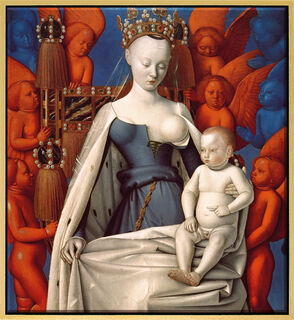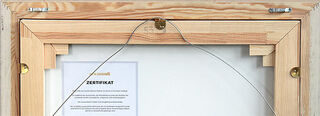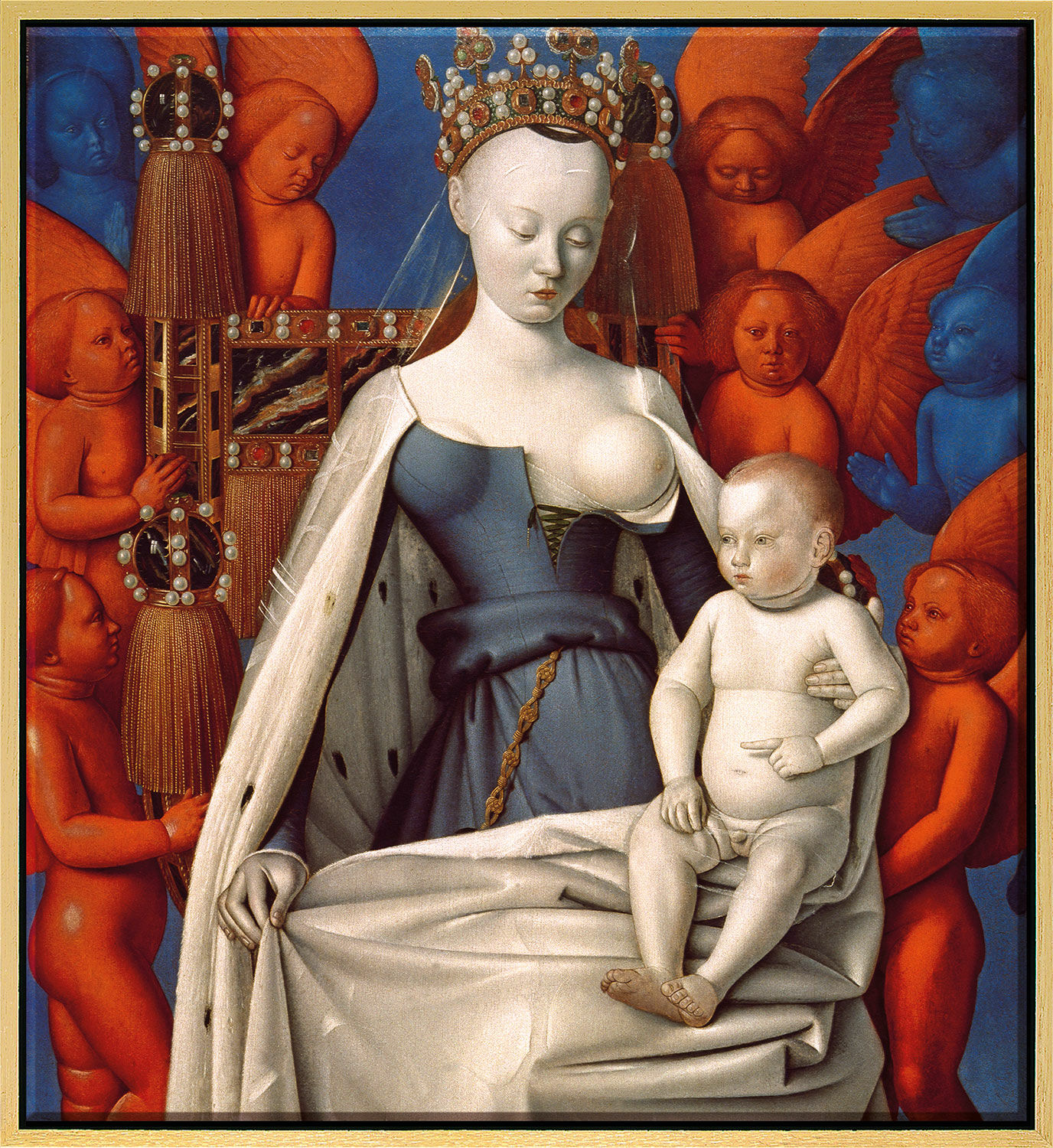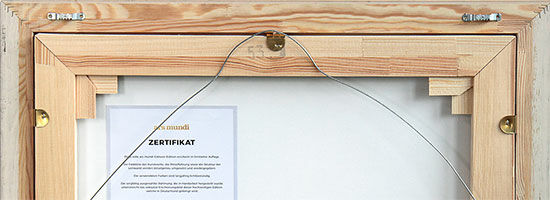Picture "Madonna Surrounded by Cherubim and Seraphim" (around 1450), golden framed version


Picture "Madonna Surrounded by Cherubim and Seraphim" (around 1450), golden framed version
Quick info
ars mundi Exclusive Edition | limited, 980 copies | numbered | certificate | reproduction, Giclée print on canvas | on stretcher frame | framed | size 84 x 77 cm (h/w)
Detailed description
Picture "Madonna Surrounded by Cherubim and Seraphim" (around 1450), golden framed version
Jean Fouquet (around 1415 to around 1480) is one of the most important French painters of the 15th century. He worked for King Charles VII and was a court painter under his successor Louis XI. His "Madonna" is one of his most famous works and most probably portrays Agnes Sorel, the mistress of Charles VII.
This painting has an extraordinary history: originally, it belongs to the right panel of Fouquet's "Diptych of Melun", which he painted around 1455 as a commission for the royal treasurer Étienne Chevalier. The left panel shows Chevalier himself as well as his patron saint, St. Stephen. In 1775, the panels of the diptych were sold separately. Today, the "Madonna" is owned by the Royal Museum of Fine Arts in Antwerp, Belgium, while the left panel belongs to the collection of the National Museums in Berlin.
Original: around 1450, oil on wood, 94 x 84 cm, right panel of the Melun Diptych, Royal Museum of Fine Arts, Antwerp.
Fine Art Giclée edition transferred directly onto artist's canvas and stretched on a stretcher frame. Limited edition of 980 copies, numbered, with certificate. Framed in a handmade, golden solid wood frame with black shadow gap. Size 84 x 77 cm (h/w). ars mundi Exclusive Edition.
Frame configurator
Customised picture frame

Frame configurator
Customised picture frame






Graphic or sculpture edition that was initiated by ars mundi and is available only at ars mundi or at distribution partners licensed by ars mundi.
Giclée = derived from the French verb gicler "to squirt, spurt".
The giclée method is a digital printing process. It is a high-resolution, large-format printout on an inkjet printer with special different-coloured dye- or pigment-based inks (usually six to twelve). The colours are fade-proof, i.e. resistant to harmful UV light. They have a high richness of nuance, contrast and saturation.
The giclée process is suitable for art canvases, handmade and watercolour paper as well as for silk.
(Rebirth). The term describing art from around 1350 until the 16th century.
A mindset that developed in Florence in the late 14th century that was retrospectively classified as rebirth of the classical ideals of Greek and Roman antiquity. During the 15th and 16th centuries, the Renaissance spread first over Italy and then all over Western Europe and determined the entire artistic creation. Brilliant artists such as Donatello, Leonardo da Vinci, Michelangelo, Raphael, Dürer, Holbein, Cranach and Fouquet created their immortal works by following the humanistic premises and placing the human being in the centre of all thinking.
Renaissance experienced its heyday in literature through dramatic works and poems of William Shakespeare.
At the end of the 16th century, the Renaissance had to give way to the opulence of baroque, before its ideas experienced a rebirth in the classicism of the 18th century.






